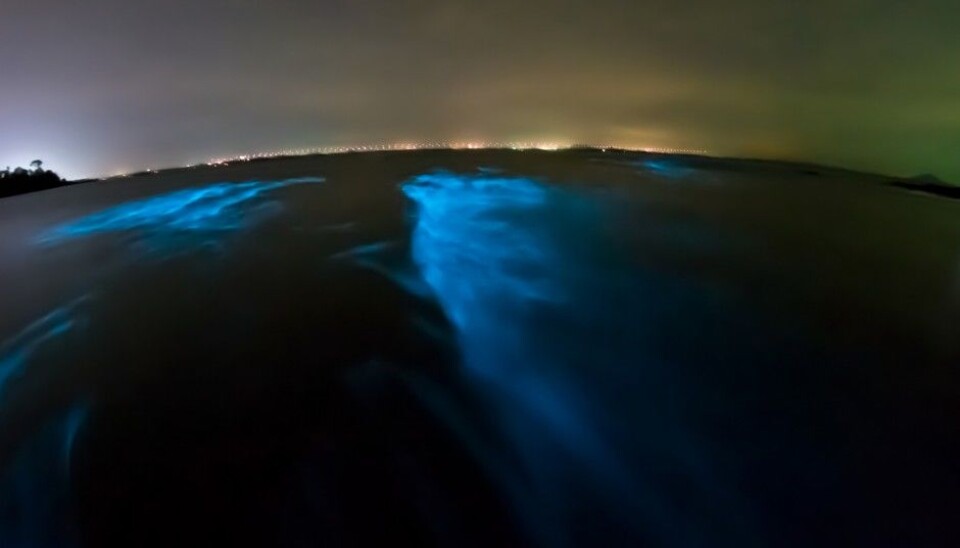
Phosphorescence aims to frighten
A new Swedish study determines a reason behind sparkling ocean bioluminescence.
It is no secret that myriads of tiny single-cell organisms called dinoflagellates are flashing when the ocean lights up with eerie blue light.
“The light protects the organisms from being eaten by their enemies,” says Jenny Lindström in a press release. She led a research project with dinoflagellates at the University of Gothenburg’s Department of Biological and Environmental Sciences.
Defence mechanism
Life forms in water, land and air create their own light for various purposes. But what triggers some of these light phenomena and how they are controlled has not been fully understood. Scientists at Sweden’s University of Gothenburg have kept a culture of dinoflagellates for years and tried to find out what occurs within the individual organism that spurs it to flash blue light, known as phosphorescence or bioluminescence.
They experimented by exposing the dinoflagellates to various chemical substances which they link to predators. Copepods are one of their main enemies, as they are for many other microorganisms in the oceans. Grazing copepods can be detected by chemical compounds they release.
When dinoflagellates sense the predators they flash for a tenth of a second as a defence against being eaten. This is what we see bioluminescence.
“We think the light startles the copepods or it might be used to signal that the dinoflagellates are toxic,” says Jenny Lindström. Another possibility is that the light attracts even larger predators, higher up the food chain, which the copepods try to stay clear of.
When the predator leaves, the dinoflagellates dance
The Swedish scientists found that dinoflagellates kept in tanks of water where there are few, or no, copepods, seem to be more “relaxed” – reducing their toxin production and bioluminescence.
Dinoflagellates can detect the grazing copepods chemically, through something akin to the sense of smell. The intensity of their luminescence increases when copepods are nearby, explains Erik Selander in the same press release. He is a researcher at the University of Gothenburg’s Department of Marine Sciences. When no copepods are present the light intensity of the dinoflagellates dims.
The organisms flash when mechanically stimulated by air bubbles, as many readers might have witnessed at night in the wake of a boat or when rowing. This flashing activity also wains when no copepods are around. This is the first study that shows an intentional physiological regulation of bioluminescence in dinoflagellates as a response to chemical cues from natural enemies.
-------------------------------------
Read the Norwegian version of this article at forskning.no
Translated by: Glenn Ostling










